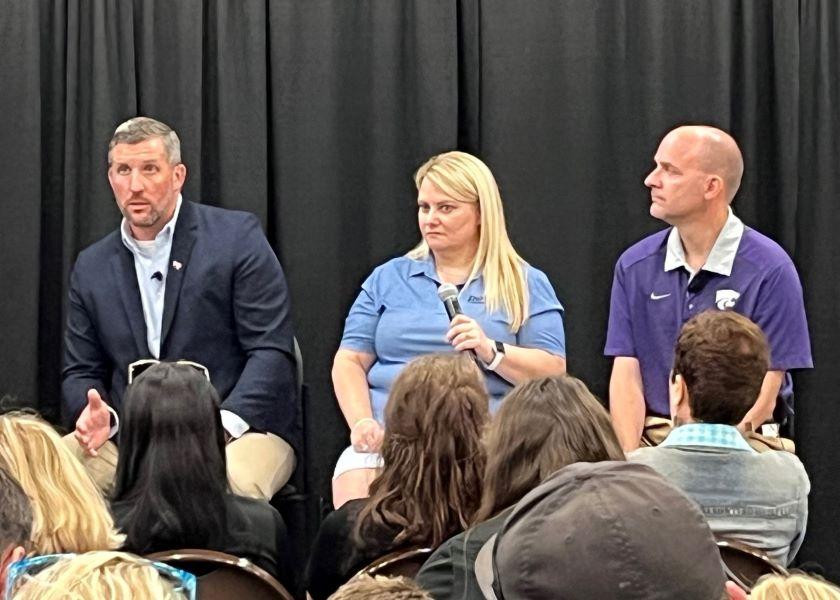Time to Shake Things Up in the Meat Business – Part 1

The pork industry has been collecting data on loin quality since 2012 and although producers have made progress, they have a long way to go, according to speakers at the 2023 World Pork Expo.
“At that time [2012] we were ‘consistently inconsistent,’” says David Newman, the new senior vice president of market growth at the National Pork Board. In the 2022 study 39.1% of supply had a quality score of less than 3 (on a scale of 1 to 6); 56.1% of supply had a score of 3; and 4.8% of supply had a quality score greater than 3, a significant improvement over previous studies. There’s opportunity for increased value, particularly since the loin is 16% to 18% of the carcass, says Newman.
“It’s been a loss leader forever so we’re putting a hard emphasis on this,” he adds.
The only reason the pork industry exists is because someone goes into a retail store, buys it, cooks it, eats it and wants to buy it again, explains Newman. But here’s where the problem exists.
When talking about pork chops, 42% of people who buy chops one time will buy them a second time, but then is goes to 24% of people who will buy them a third time and a dismal 11% of consumers will buy them a fourth time, says Kiersten Hafer, vice president of strategy and domestic market development at the National Pork Board.
“We’re trying to keep pork top-of-mind,” she says. “It comes down to the fact that we’re pounding the pavement talking about the pork industry in a way that’s different from how the brand would be approaching customers. We try to go after different retailers and different consumers and see what resonates and what drives more purchases.
“There’s a lot of volume at stake,” she adds. “We need to reframe how we’ve been positioning the loin and make it relevant to Gen Z and millennial consumers.”
Changing marketplace
The American consumer has changed. Younger consumers are buying more meat online than they are in stores, says Hafer, and increasingly, they’re buying ready-to-prepare, portion-size meals. They don’t know what to do with a pork loin.
In addition, they’re eating smaller but more frequent meals.
“As generations get younger they have 4 to 4.5 eating occasions per day,” says Glynn Tonsor, professor in the department of agricultural economics at Kansas State University. If the industry can adapt to that, we can meet the consumer where they are.”
On the positive side, the majority of the U.S. public does want more protein in their collective diet, he says.
The medical community has not been a friend to the meat industry in general, but Tonsor points out that what is considered a clinical truth about pork and meat in general today may not be clinical truth tomorrow.
Harsh reality
Forty years ago, pigs were too fat, but then the pendulum swung too far, and a lot of the natural marbling and taste was removed. Then, the trend was for producing large litters and more pigs – not necessarily pigs with high quality muscle. Through these changes, the consumer wasn’t always the beneficiary.
“Since we’re being really honest, we have gone through some phases in this industry and it really sucked,” says Newman. “We know where the industry has been and that drag on the loin is historical. As we look now, this is the primary product we put in front of consumers and we are making it better.”
The loin is the key, says Hafer.
“If we don’t get the loin right, we lose the consumer. Our foot is on the gas in promoting loins and we hope we can eventually go after additional volume and get to a point where everyone sees the value.”
Editor’s Note: Part 2 covers more initiatives the industry is taking to address fresh meat sales, including the new Loin Complex Task Force.
Read More:
Looking at the Loin Differently
The Most-Asked Question at the 2023 World Pork Expo
Sol the Agriculture Detection Dog: A U.S. Hero
Ears to the Ground: World Pork Expo Conversations Focus on Top Industry Issues
West Coast Port Delays Cause Big Issues for U.S. Pork Exports
Meet Two Pig Farmers Finding Unique Ways to Serve Up More Pork Demand
NPPC's Bryan Humphreys: Advocating for U.S. Pork Producers, Beyond World Pork Expo
Worse Than 1998? Why Explosive Exports May Not Even Be Enough to Change the Course of Pork Prices
Discouraging Outlook Ahead but Bright Spots Exist – Part 1
Supply Outlook: Fewer Sows Farrowing than in 2014 and 2015? - Part 2







